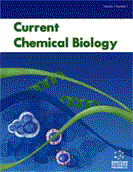Abstract
Metal complexes of amino acids or small peptides interest biochemists. Some studies about their structures have therefore been carried out on the assumption that such complexes will act as models for the metal-binding sites on proteins. From the point of view of coordination chemistry, an amino acid can be regarded as a typical multidentate ligand which has different ligating atoms, a nitrogen atom of an amino group and an oxygen atom of a carboxyl group. The different ligating atoms can be coordinated to different metal ions such as metals having different hardness. The advantages of amino acid of being able to form a chelate ring and/or be coordinated to different metals can be used to synthesize heteronuclear and/or polynuclear complexes. Such syntheses of heteronuclear and/or polynuclear complexes continue to be an intensive and challenging area of investigation. In this article, some examples of polynuclear complexes with amino acids or peptides as a bridging ligand will be introduced and the possibility of using amino acidato complexes as potential building blocks in the formation of more complicated polynuclear arrays will be explored.
Keywords: Amino acid, peptide, polynuclear complex, X-ray structure
Current Chemical Biology
Title: Synthesis of Polynuclear Complexes with an Amino Acid or a Peptide as a Bridging Ligand
Volume: 2 Issue: 2
Author(s): Takashi Komiyama, Satoshi Igarashi and Yasuhiko Yukawa
Affiliation:
Keywords: Amino acid, peptide, polynuclear complex, X-ray structure
Abstract: Metal complexes of amino acids or small peptides interest biochemists. Some studies about their structures have therefore been carried out on the assumption that such complexes will act as models for the metal-binding sites on proteins. From the point of view of coordination chemistry, an amino acid can be regarded as a typical multidentate ligand which has different ligating atoms, a nitrogen atom of an amino group and an oxygen atom of a carboxyl group. The different ligating atoms can be coordinated to different metal ions such as metals having different hardness. The advantages of amino acid of being able to form a chelate ring and/or be coordinated to different metals can be used to synthesize heteronuclear and/or polynuclear complexes. Such syntheses of heteronuclear and/or polynuclear complexes continue to be an intensive and challenging area of investigation. In this article, some examples of polynuclear complexes with amino acids or peptides as a bridging ligand will be introduced and the possibility of using amino acidato complexes as potential building blocks in the formation of more complicated polynuclear arrays will be explored.
Export Options
About this article
Cite this article as:
Komiyama Takashi, Igarashi Satoshi and Yukawa Yasuhiko, Synthesis of Polynuclear Complexes with an Amino Acid or a Peptide as a Bridging Ligand, Current Chemical Biology 2008; 2 (2) . https://dx.doi.org/10.2174/2212796810802020122
| DOI https://dx.doi.org/10.2174/2212796810802020122 |
Print ISSN 2212-7968 |
| Publisher Name Bentham Science Publisher |
Online ISSN 1872-3136 |
 4
4
- Author Guidelines
- Bentham Author Support Services (BASS)
- Graphical Abstracts
- Fabricating and Stating False Information
- Research Misconduct
- Post Publication Discussions and Corrections
- Publishing Ethics and Rectitude
- Increase Visibility of Your Article
- Archiving Policies
- Peer Review Workflow
- Order Your Article Before Print
- Promote Your Article
- Manuscript Transfer Facility
- Editorial Policies
- Allegations from Whistleblowers
- Announcements
Related Articles
-
Application in Electrochemistry of Graphene-Modified Electrodes
Micro and Nanosystems Transport of Bupropion and its Metabolites by the Model CHO and HEK293 Cell Lines
Drug Metabolism Letters Abelson Tyrosine-Protein Kinase 1 as Principal Target for Drug Discovery Against Leukemias. Role of the Current Computer-Aided Drug Design Methodologies
Current Topics in Medicinal Chemistry High Concentrations of Organochlorines in a Patient with Kidney Cancer and Anorexia-cachexia Syndrome
Medicinal Chemistry The Clinical Perspective on Value of 3D, Thin Slice T2-Weighted Images in 3T Pelvic MRI for Tumors
Current Medical Imaging Phytochemical Characterization of Prickly Pear (Opuntia spp.) and of its Nutritional and Functional Properties: A Review
Current Nutrition & Food Science Formulation Development of Chitosan Coated Intra Nasal Ropinirole Nanoemulsion for Better Management Option of Parkinson: An In Vitro Ex Vivo Evaluation
Current Nanoscience Antioxidants in Health, Disease and Aging
CNS & Neurological Disorders - Drug Targets Chronopharmaceutics: A Promising Drug Delivery Finding of the Last Two Decades
Recent Patents on Drug Delivery & Formulation Neuroprotective Appraisal of Methanolic Extract of Flowers of Nerium oleander in a Non Classical Rat Model of Alzheimer Disease
The Natural Products Journal Anti-cancer Potential of Phyto-alkaloids: A Prospective Review
Current Cancer Therapy Reviews Isomannide and Derivatives. Chemical and Pharmaceutical Applications
Mini-Reviews in Organic Chemistry Ca<sup>2+</sup>-Myristoyl Switch in Neuronal Calcium Sensor-1: A Role of C-Terminal Segment
CNS & Neurological Disorders - Drug Targets Novel Systemic Drugs for Cutaneous T-Cell Lymphoma
Recent Patents on Anti-Cancer Drug Discovery Is Metformin a Therapeutic Paradigm for Colorectal Cancer: Insight into the Molecular Pathway?
Current Drug Targets Chemical Composition and Inhibitory Effects of Hypericum brasiliense and H. connatum on Prolyl Oligopeptidase and Acetylcholinesterase Activities
Medicinal Chemistry Application of Chiral Bisamide Ligands in Asymmetric Catalytic Syntheses
Current Organic Synthesis 3-Substituted Isocoumarins as Thymidine Phosphorylase Inhibitors
Letters in Drug Design & Discovery Nanomaterials-based Polymerase Chain Reactions for DNA Detection
Current Organic Chemistry Polymeric Aggregates in Ionic Liquids: the Green Future of the Delivery Systems
Current Drug Targets

















.jpeg)








